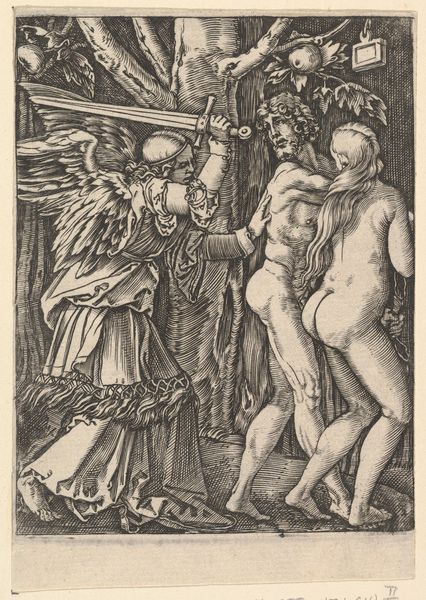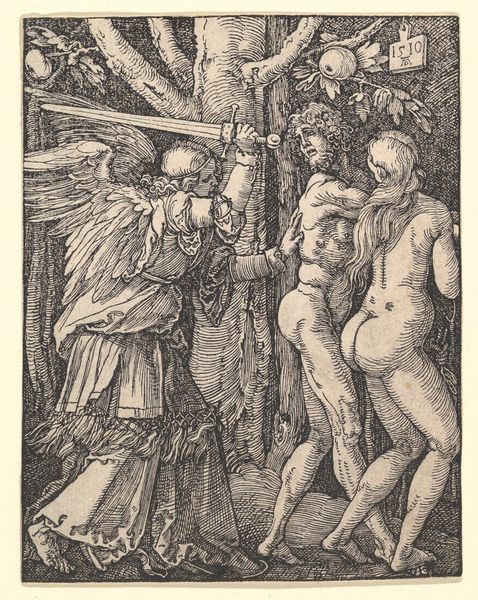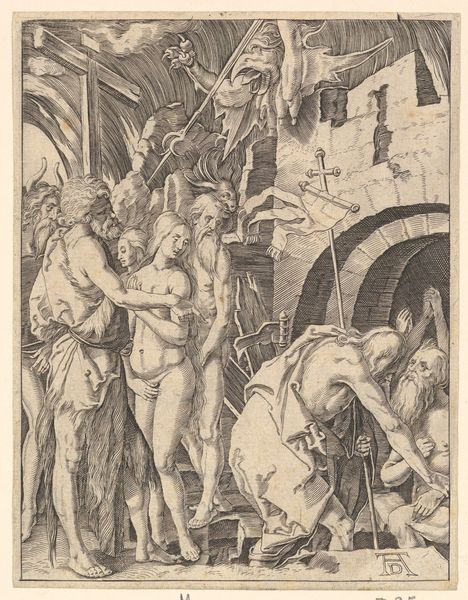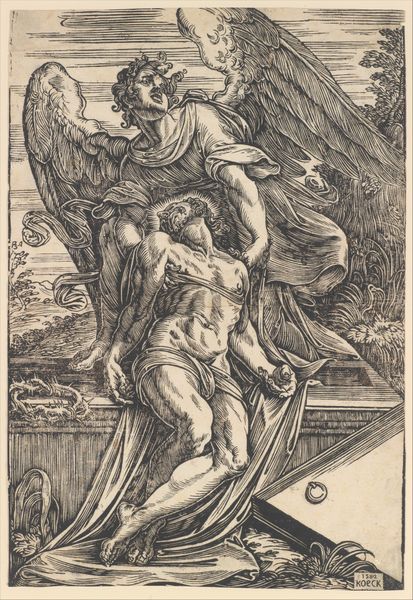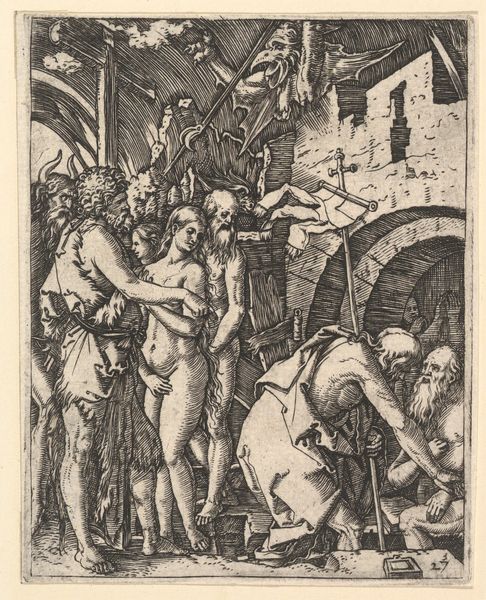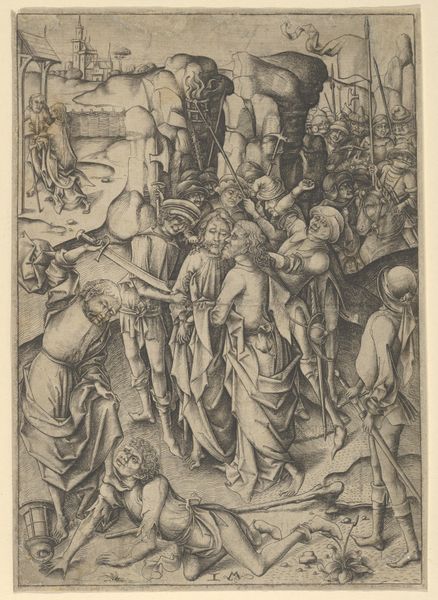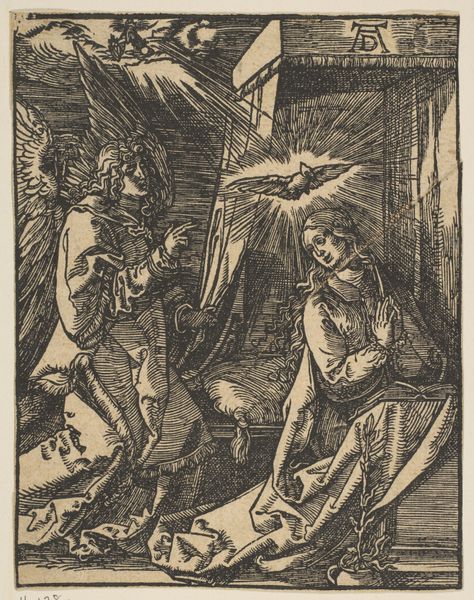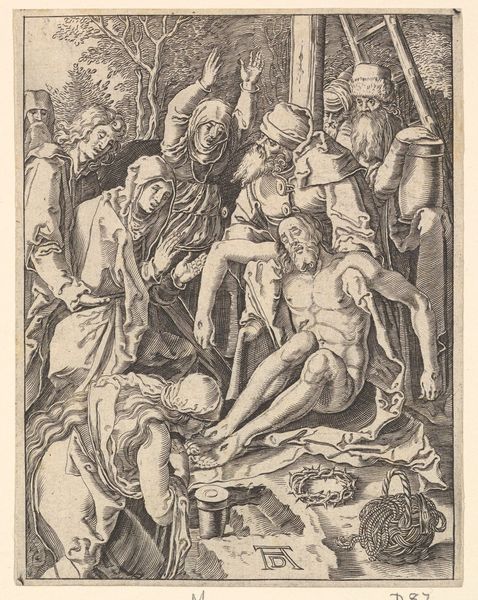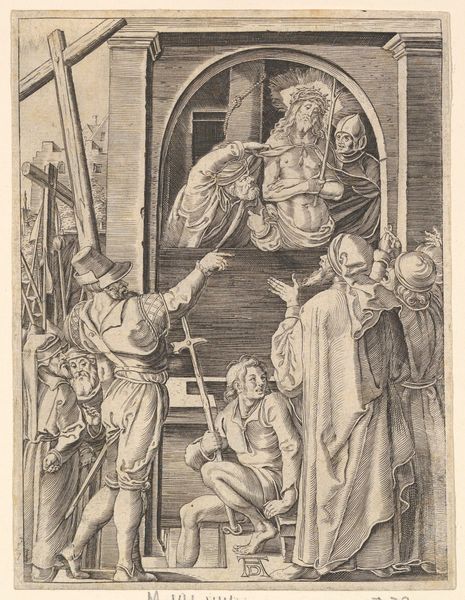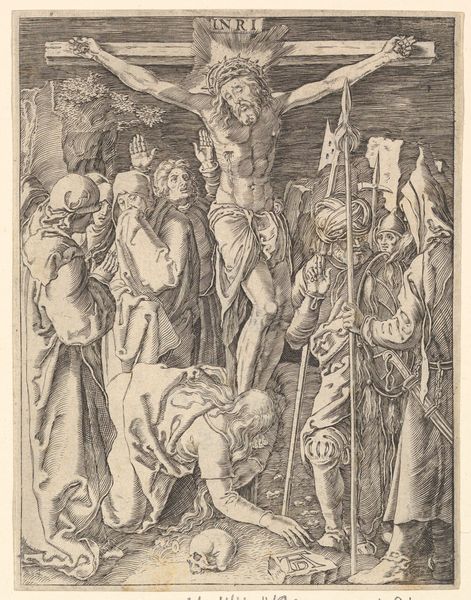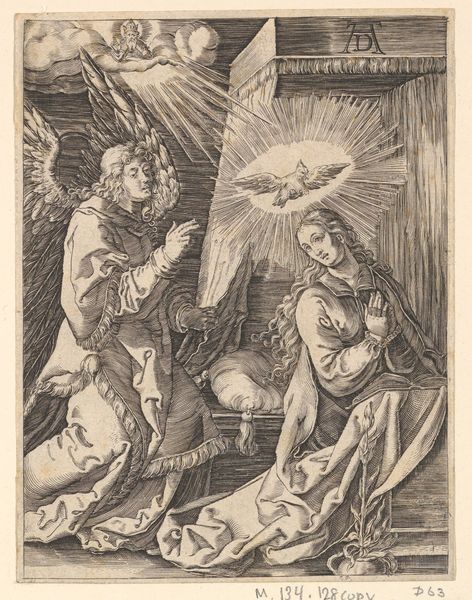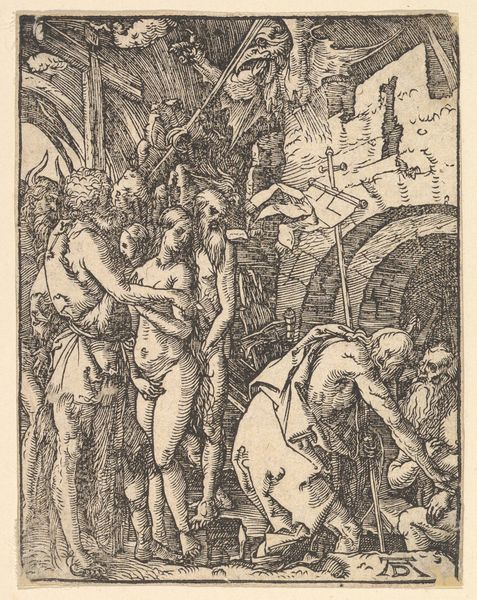
drawing, print, engraving
#
drawing
# print
#
figuration
#
female-nude
#
history-painting
#
northern-renaissance
#
engraving
#
male-nude
Dimensions: For the whole series: plate circa : 5 x 3 13/16 in. (12.7 x 9.7 cm)
Copyright: Public Domain
Editor: This engraving, titled "Engraved copies of The Little Passion," attributed to Albrecht Dürer and dating from between 1485 and 1699, depicts Adam and Eve being expelled from the Garden of Eden. The detail is striking. What's your take on this work? Curator: This engraving is not just a depiction of a biblical story, it’s a visual articulation of power, gender, and transgression, speaking directly to the patriarchal structures that have shaped Western art and thought for centuries. Editor: Can you elaborate on that? Curator: Consider the angel looming over Adam and Eve, brandishing a sword. Who authorized this power? From whose perspective is this “justice” being meted out? The narrative places blame squarely on Eve, reinforcing the problematic idea of women as the primary instigators of wrongdoing and suffering. And note how the depiction of their bodies—especially Eve's—serves to simultaneously punish and eroticize her. It caters to the male gaze even as it condemns her actions. Editor: That's a very interesting point of view, different from the way I initially looked at it. Curator: It also intersects with broader social power dynamics; the ruling class during the Northern Renaissance, very much like now, uses cultural narratives like this to establish power over those without it. What if, rather than accepting this narrative, we reclaim the symbol of the apple to be representative of Eve's thirst for knowledge and the desire for free will? What meanings could be born out of that narrative subversion? Editor: So, this artwork really offers a window into the prevailing gender politics of the time, but with the added lens of critical theory, it offers valuable insight into present-day concerns, as well. Curator: Exactly. Examining Dürer's choices reveals how art can both reflect and perpetuate inequalities, and inspires viewers to re-evaluate power systems of all times.
Comments
No comments
Be the first to comment and join the conversation on the ultimate creative platform.
